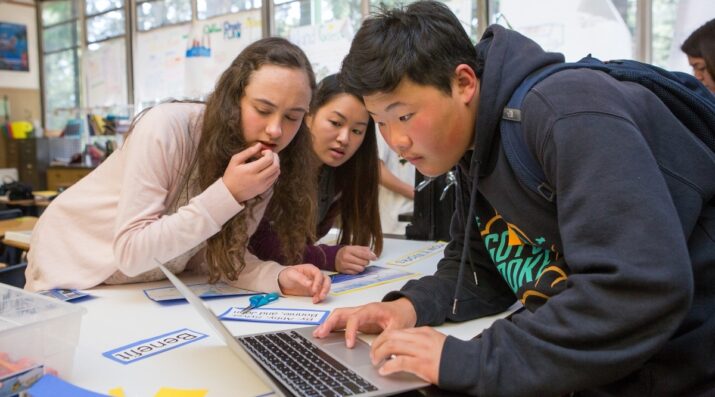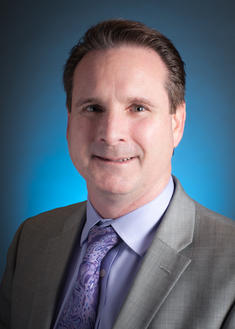New Designs for School
Transforming High School by Challenging Students to Take Action Based on Their Learning
Topics

We’ve all had the experience of truly purposeful, authentic learning and know how valuable it is. Educators are taking the best of what we know about learning, student support, effective instruction, and interpersonal skill-building to completely reimagine schools so that students experience that kind of purposeful learning all day, every day.
A Vista High School student takes action on a topic she discovered during her learning, realizing the power of student voice to improve her own learning experiences.
The International Center for Educational Research and Practice (iCERP) promotes intersectionality of thought on a global scale. Nothing is more central to this focus than the transformation of the very fabric of education. We are all experiencing a shift in thinking and action around the learning pathways that students are taking; a shift that includes moving to a student-centered approach to education, where the students step away from their traditional role as recipients of core subject content and move into the driver’s seat of their quest to become flexible, nimble thinkers and learners in an increasingly complex society.
In this series about Vista High School in Southern California, we place a laser focus on actively engaging student voice at the high school level in various elements of transformation in education. The goal: to hear, first hand, how these changes are affecting the students’ lives as learners and future members of the global workforce.
This post focuses on challenging students to take action on a topic or problem that they discover during their learning. As students act on their learning, they move closer to realizing the power of student voice to improve their own learning experiences. Student Perla Lopez shares her experiences actively engaging in the design of the learning environment.
Why Do We Need to Change?
From Craig Gastauer
Andreas Schleicher of the OECD has stated:
"The world economy no longer pays for what people know. Google knows everything. Today’s economy pays for what they can do with what they know."
Acting on My Learning Impacts the Way I Learn
From Perla Lopez
At Vista High School, a class that has made an impact among lots of students is the Challenge course. In this Challenge class students learn about different world issues, investigate about the topic, engage with it, and then determine how to take action on our learning. It’s something related to "think globally act locally." The hardest part of all this process is when the students have to come up with a plan to make a positive difference for their topics by using all the gathered research.
In our first unit we looked through the lens of restorative justice rather than criminal justice, as well as mass incarceration, and eventually the school-to-prison pipeline. The global issue here was mass incarceration. We looked at statistics informing us about the majority race being locked up, the reasons of imprisonments, and punitive measures. This required us to examine what is happening to students our own age. This is where we found out about the school-to-prison pipeline in which a set of policies and procedures drive students to a path that begins in school and ends in prison.
As we read the definition we looked at our very own policies from school and the effects they have on us. Eventually this is where we learned about restorative justice versus criminal justice and the negative impacts of punitive measures. So what we did was take all of our policies and think of consequences for each offense done. But instead of using punitive measures and criminal justice, we explored how restorative justice could be used as an alternative. These "consequences" were to ensure that the student does not break the policy again and get the help they need. Due to our learning, we intend to talk to our School Board Members as of January 2019, in an attempt to change their policies and focus on using restorative justice.
Thinking of what I can do based off my learning makes me want to help my community and have a better world for all of us.
If our school policies actually changed, I would feel very powerful. By this I mean that I would feel that I am capable of doing the impossible. Having to talk to the School Board Members makes me want to put more effort into this great cause because this is a pretty serious situation and it demonstrates that us teenagers can change anything we’d really like to. Speaking to the members also shows me the real importance behind this assignment and the change it can make if we keep taking it seriously as we are now.
In my opinion it is really fun to act on my learning because I am not only taking in information but learning what to do with the information in a positive way. It is also teaching me how to prepare for the real world to solve any issue no matter how big or small. There was a lot of interaction not only with peers, but also with adults who came to class and talked about the topic and what they knew. Every day there was something new to learn. I personally felt capable of doing anything. Learning like this is also fun and you start to know how much of an impact you can have in your community.
Teachers should motivate students to take action based on their learning because it also teaches students many more skills. Some of the skills I used were communicative skills, collaborative skills, and thinking critically skills. Taking action based on my learning has become fundamental to me because I am the social type of person, and I learned more when I was able to work with others to take action. Thinking of what I can do based off my learning makes me want to help my community and have a better world for all of us. I personally encourage all those who can to take action based off their learning; I'm sure that you will inspire someone else and it will keep you engaged.
Read more student perspectives on the learning transformation at Vista High School:
- Creating an environment of wellness
- Challenging students to solve real problems
- Supporting student self-discovery
Top photo courtesy of Allison Shelley/The Verbatim Agency for American Education: Images of Teachers and Students in Action




